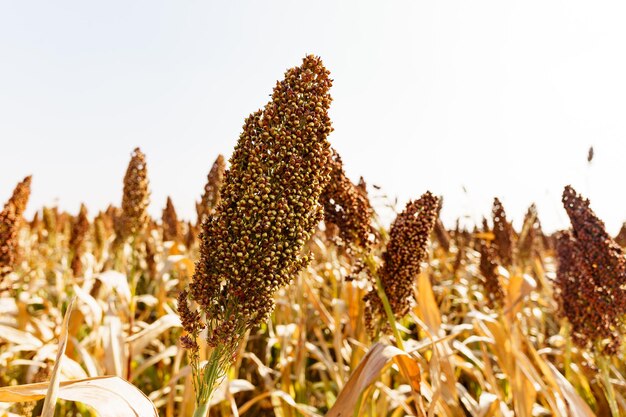Sorghum is a resilient and drought-tolerant crop that plays a significant role in food security and agriculture, particularly in arid regions. However, it is susceptible to various diseases, including leaf blight, which can severely impact yield and quality. Early detection of leaf blight is crucial for effective management and control. Here are ten early signs to look for in your sorghum crops that may indicate the presence of leaf blight.
1. Yellowing of Leaves
One of the first signs of leaf blight is the yellowing of the lower leaves. This chlorosis often spreads upward as the disease progresses. Affected leaves may appear pale or light green, indicating that the plant is struggling to photosynthesize effectively.
2. Water-soaked Spots
Initial symptoms of leaf blight often manifest as small, water-soaked spots on the leaves. These spots may be dark and shiny, signaling the beginning of the disease. If left unchecked, these spots can enlarge and lead to more severe symptoms.
3. Dark Brown or Black Lesions
As the disease develops, the water-soaked spots can progress into dark brown or black lesions. These lesions can vary in size and may have a yellow halo surrounding them. This distinct coloration is a hallmark of leaf blight and should prompt immediate attention.
4. Necrosis of Leaf Tips
Another early sign of leaf blight is necrosis, where the tips of the leaves begin to die off. This browning and dying of leaf tissue can spread inward from the tips, leading to significant leaf loss and reduced plant health.
5. Leaf Curling or Distortion
Infected plants may exhibit curling or distortion of leaves, which can alter their shape and structure. This response is often a sign of stress as the plant struggles to cope with the disease and may indicate that the infection is spreading.
6. Reduced Leaf Area
As leaf blight takes hold, the overall leaf area of the sorghum plant may begin to diminish. This reduction can limit the plant’s ability to photosynthesize, impacting growth and yield potential. Farmers should monitor for any noticeable changes in leaf size and density.
7. Stunted Growth
Plants affected by leaf blight may show signs of stunted growth compared to healthy plants. Infected sorghum plants often exhibit reduced height and poor overall vigor, making them less competitive against healthy crops.
8. Increased Leaf Drop
As the disease progresses, infected leaves may begin to drop prematurely. Increased leaf drop can lead to a decline in plant health and a significant reduction in the photosynthetic capacity of the crop, which ultimately affects yield.
9. Presence of Fungal Spores
In some cases, you may notice a white or grayish mold on the leaves, indicating the presence of fungal spores associated with leaf blight. This mold can be a sign of the disease and may require immediate intervention to prevent further spread.
10. Spread of Symptoms
Finally, one of the most telling signs of leaf blight is the rapid spread of symptoms throughout the field. If you observe multiple plants showing signs of infection within a short period, it is crucial to take action, as leaf blight can spread quickly and affect large areas.
Early detection of leaf blight in sorghum is vital for effective disease management and mitigation of yield loss. By being vigilant and recognizing these ten early signs, farmers can take proactive measures to control the disease, such as applying fungicides, improving crop rotation practices, and ensuring proper field sanitation. Regular monitoring and quick intervention can help protect sorghum crops and secure a successful harvest.
Join 'Farmers Mag' WhatsApp Channel
Get the latest Farming news and tips delivered straight to your WhatsApp
CLICK HERE TO JOIN






